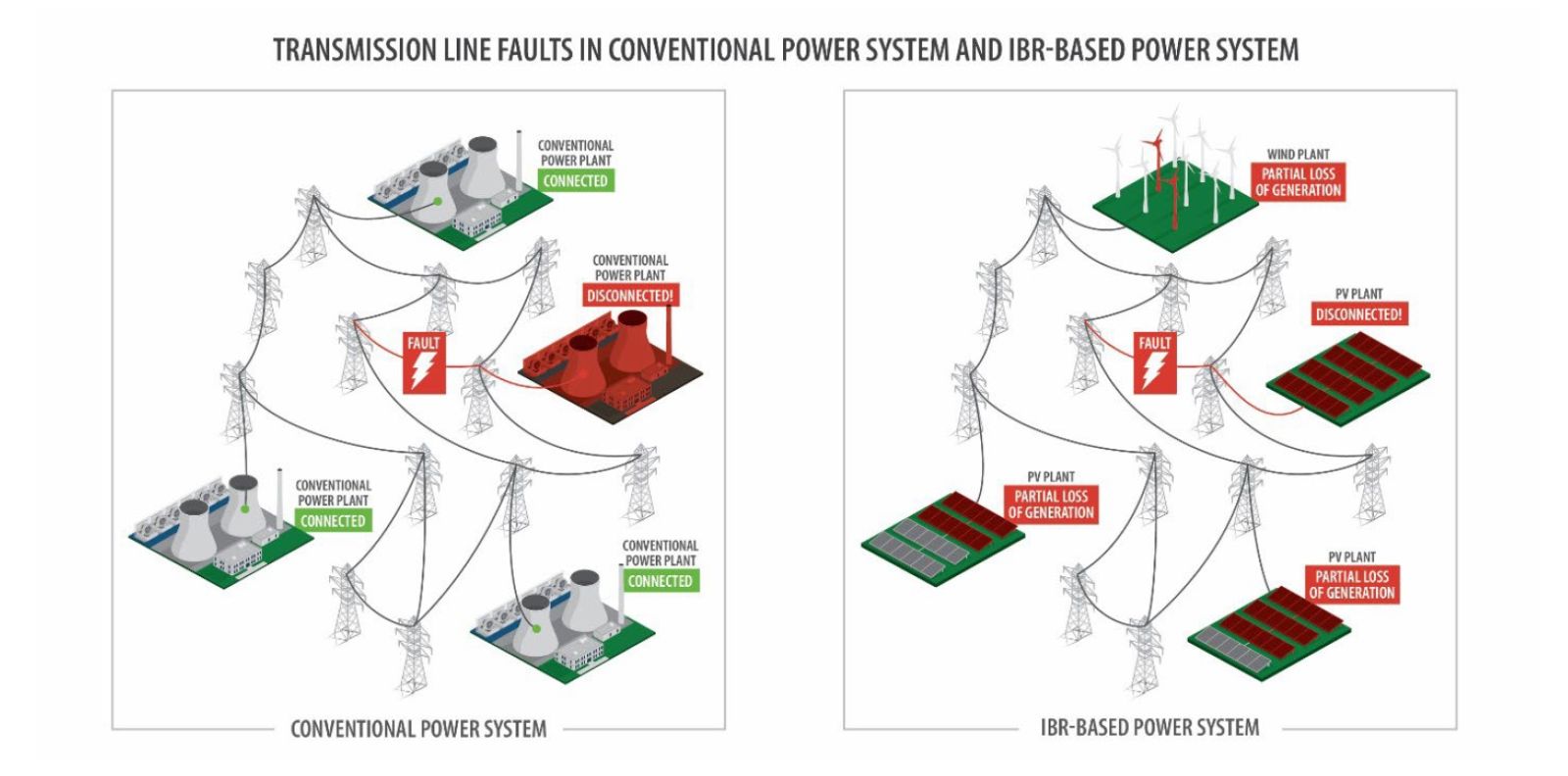ORNL Demonstrates Power of New Modeling Approach to Understand Faults in the Modern Electric Grid
Researchers at the Department of Energy’s Oak Ridge National Laboratory are leading the way in understanding the effects of electrical faults in the modern U.S. power grid.
Faults are abnormal conditions in an electrical circuit that interrupt the flow of power, with the potential to cause blackouts that affect thousands of customers. Faults can be caused by equipment failure, human error, weather events and natural disasters. Understanding them enables electric companies and system operators to maintain reliable electricity service and reduce the number of outages.
However, traditional modeling methods are less effective at predicting how cutting-edge digital technology will behave. Greener resources like solar panels and electric vehicle chargers are spreading through the electric grid, increasing the presence of electronics called inverters, which alter the flow of electrical current to match the larger transmission system. Compared to mechanical systems, power electronics are much faster-acting devices that are affected differently by faults in distant parts of the grid. But most power companies have not adjusted their planning to reflect these changes.

Faults affect a conventional power system differently than they do modern systems with many inverter-based resources, or IBRs, such as solar and wind energy. Credit: Philip Gray/ORNL, U.S. Dept. of Energy
That’s why the North American Electric Reliability Corporation, or NERC, an international regulatory authority responsible for grid reliability, is asking utilities and operators to use a new method to probe the causes and effects of faults: electromagnetic transient, or EMT, domain analysis. Compared with traditional modeling, this type of analysis is expected to portray rapidly unfolding events more accurately. But the power industry is now exploring new fast approaches to meet these requirements by also exploiting newer high speed computers.
“As the grid transformation happens with more inverter-based resources and EV chargers, EMT is needed to understand the reliability of the system,” said ORNL researcher Suman Debnath. Lacking these methods and tools, operators and utilities may not be able to retain their past level of service reliability, especially as they plan future interconnections and expansions of the transmission system.
Debnath’s team of ORNL researchers, working with partner Southern California Edison, conducted one of the first successful fault replications using EMT earlier this year after integrating their own models and algorithms into an EMT domain analysis tool. Running the simulation in the ORNL lab and in hardware at Southern California Edison, they accurately reproduced the effects of a 2018 California fault on a large solar plant.
“Developing a high-fidelity model will help utilities better understand the physical dynamics of the power electronics, thus improving grid performance and aligning with our future vision of grid modernization,” said Md Arifujjaman, senior engineer for grid technology innovation at Southern California Edison. “This kind of project helps us a lot. The more dynamics you can present, the better for us, for the grid and for the customer.”
To share this EMT simulation expertise with utilities, system operators, researchers and others, ORNL will host a workshop on August 24 and 25 in collaboration with the Department of Energy and NERC. Participants will learn about algorithms and tools, modeling and conducting planning, and interconnection studies using the new method.
ORNL researchers Phani Marthi, Jongchan Choi and Qianxue Xia contributed to the EMT simulation research, which was sponsored by the DOE Solar Energy Technologies Office and DOE Office of Energy Efficiency and Renewable Energy. Additional research partners include Pennsylvania State University, which also worked on the modeling, and Florida Power & Light.
Oak Ridge National Laboratory | https://www.ornl.gov/








